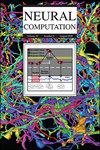Low-Rank, High-Order Tensor Completion via t- Product-Induced Tucker (tTucker) Decomposition
IF 2.1
4区 计算机科学
Q3 COMPUTER SCIENCE, ARTIFICIAL INTELLIGENCE
引用次数: 0
Abstract
Recently, tensor singular value decomposition (t-SVD)–based methods were proposed to solve the low-rank tensor completion (LRTC) problem, which has achieved unprecedented success on image and video inpainting tasks. The t-SVD is limited to process third-order tensors. When faced with higher-order tensors, it reshapes them into third-order tensors, leading to the destruction of interdimensional correlations. To address this limitation, this letter introduces a tproductinduced Tucker decomposition (tTucker) model that replaces the mode product in Tucker decomposition with t-product, which jointly extends the ideas of t-SVD and high-order SVD. This letter defines the rank of the tTucker decomposition and presents an LRTC model that minimizes the induced Schatten-p norm. An efficient alternating direction multiplier method (ADMM) algorithm is developed to optimize the proposed LRTC model, and its effectiveness is demonstrated through experiments conducted on both synthetic and real data sets, showcasing excellent performance.通过t积诱导塔克(tTucker)分解的低秩、高阶张量补全。
近年来,基于张量奇异值分解(t-SVD)的方法被提出用于解决低秩张量补全(LRTC)问题,并在图像和视频补全任务中取得了前所未有的成功。t-SVD仅限于处理三阶张量。当面对高阶张量时,它将其重塑为三阶张量,导致维间相关性的破坏。为了解决这一局限性,本文引入了一种t-product Tucker分解(tTucker)模型,该模型用t-product代替Tucker分解中的模态积,它共同扩展了t-SVD和高阶SVD的思想。这封信定义了塔克分解的秩,并提出了一个最小化诱导schattenp范数的LRTC模型。为了优化LRTC模型,提出了一种高效的交变方向乘子算法(ADMM),并在合成数据集和真实数据集上进行了实验,证明了该算法的有效性。
本文章由计算机程序翻译,如有差异,请以英文原文为准。
求助全文
约1分钟内获得全文
求助全文
来源期刊

Neural Computation
工程技术-计算机:人工智能
CiteScore
6.30
自引率
3.40%
发文量
83
审稿时长
3.0 months
期刊介绍:
Neural Computation is uniquely positioned at the crossroads between neuroscience and TMCS and welcomes the submission of original papers from all areas of TMCS, including: Advanced experimental design; Analysis of chemical sensor data; Connectomic reconstructions; Analysis of multielectrode and optical recordings; Genetic data for cell identity; Analysis of behavioral data; Multiscale models; Analysis of molecular mechanisms; Neuroinformatics; Analysis of brain imaging data; Neuromorphic engineering; Principles of neural coding, computation, circuit dynamics, and plasticity; Theories of brain function.
 求助内容:
求助内容: 应助结果提醒方式:
应助结果提醒方式:


